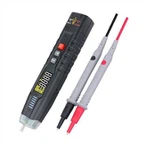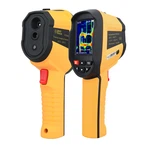Four incorrect usage behaviors of moisture meter
Do not leave the instrument in the activity kiln
Kiln drying is an important part of the woodworking process. By drying wood in the kiln, carpenters can ensure that excessive moisture does not cause unsightly warping or other defects in the final product.
A moisture meter is a very useful tool to ensure that kiln dried wood is actually dry. However, it is important to be careful not to leave the hygrometer in the hot kiln. Extreme temperatures can cause damage to sensitive electronic devices, and hygrometers are no exception. Even if there are no external signs of damage or carbonization, the internal circuits of the instrument will still be damaged.
It is important to pay attention to short-term exposure, such as what happens when you enter a kiln for quick reading, which should usually not be a problem with a well made hygrometer. A real problem occurs when the instrument is left inside the hot kiln.
Do not immerse the instrument in water
Although hygrometers are designed to detect moisture, they do not necessarily mean they are actually submerged in water. When water enters the interior of the device, whether it is a needle type, needle free, or temperature and humidity meter, it will damage the circuit board inside the device, causing the circuit board to short circuit like any other electronic device.
This may sound like an obvious suggestion, but you may be surprised that the cause of moisture damage is the malfunction of the hygrometer.
For pinless and needle instruments, excessive moisture on the reading element (contact pin of needle, scanning board without needle) can cause corrosion if left alone for too long. Resolve this issue by cleaning the reading element after use. This can extend the service life of the instrument and maintain its accuracy.
Don't dismantle your instrument panel
Many manufacturers recommend that you do not disassemble electronic devices in an attempt to solve problems on your own. There is actually a good reason to follow this suggestion: simply try opening it to cause more damage to the device's interior.
Most hygrometers are designed to be sealed. Opening the device in a non sterile environment may expose the PC board to pollutants that may cause its degradation. We suggest that you avoid attempting to move or modify internal components of the device.
Instead, try calling the manufacturer's hygrometer support hotline or checking their website for frequently asked questions to see if there is a solution to the problem you are facing that does not involve opening the casing. If not, please send the device for repair. Manufacturers should be able to solve the problem, and if not, they can replace it. Of course, this assumes that the hygrometer is still under warranty (and most warranties are invalidated by opening the device's casing)






